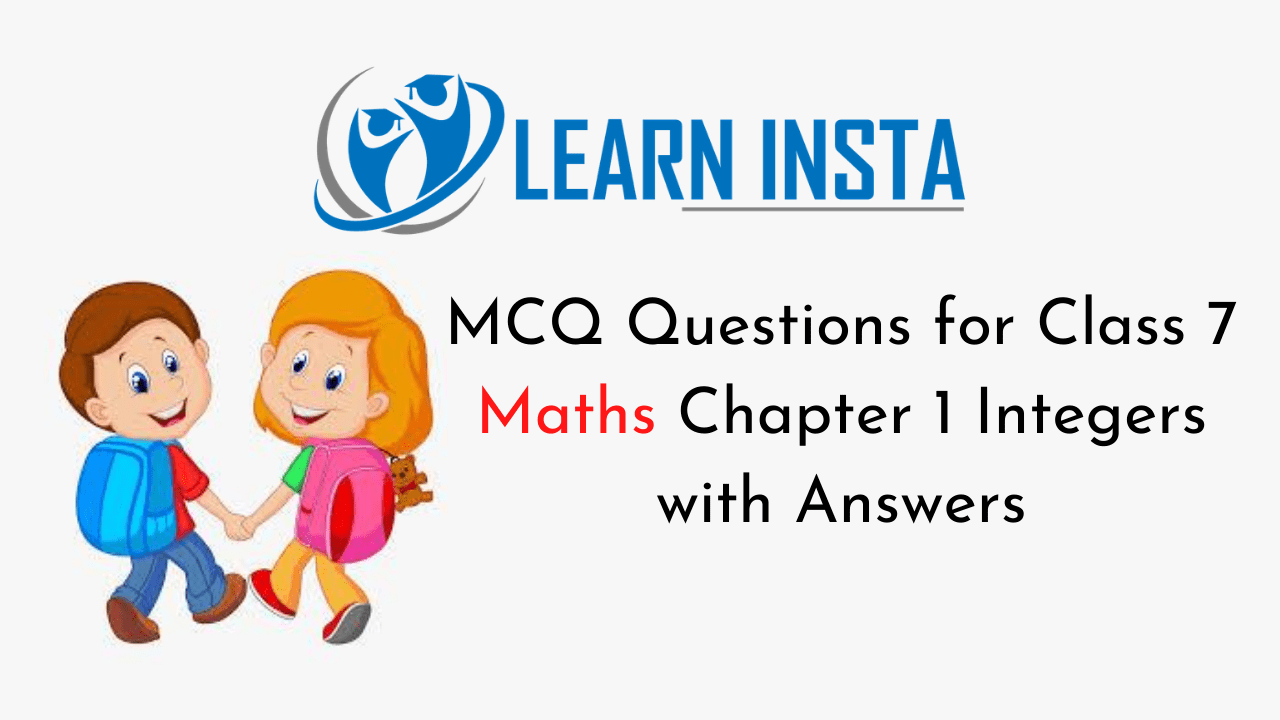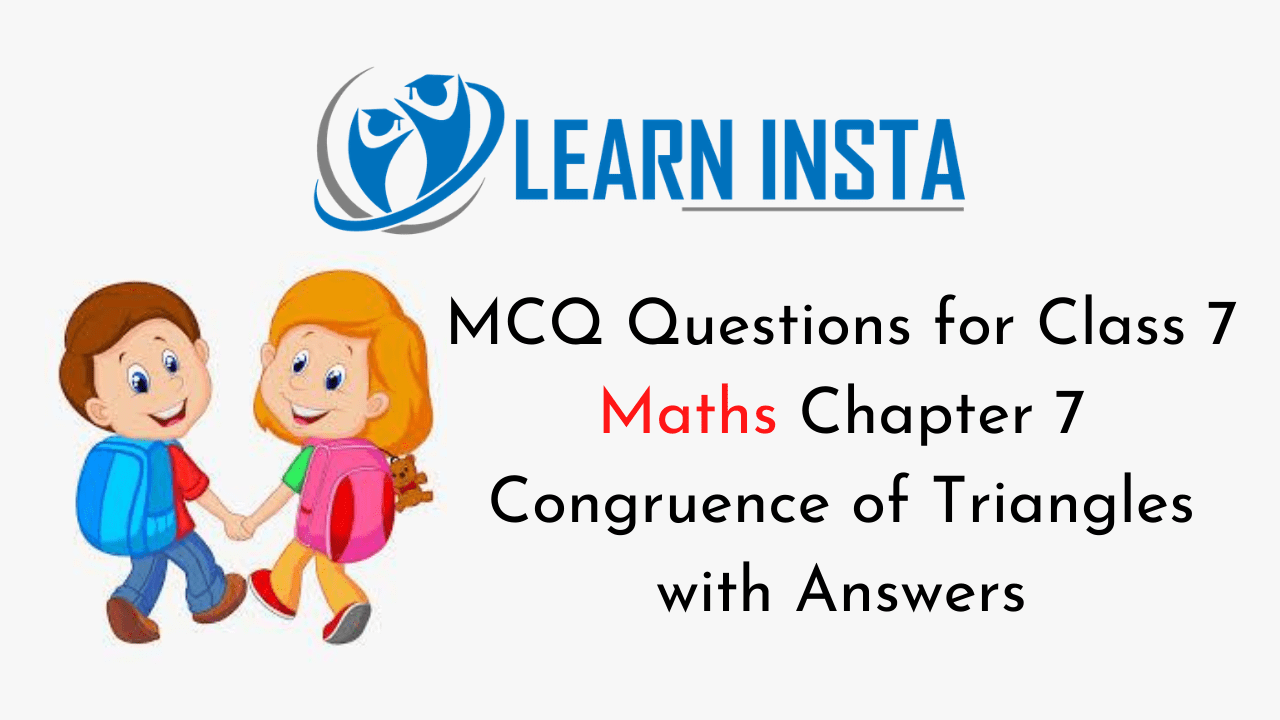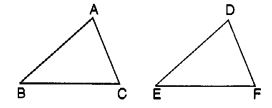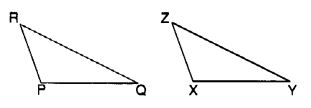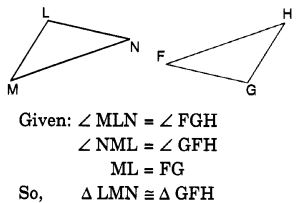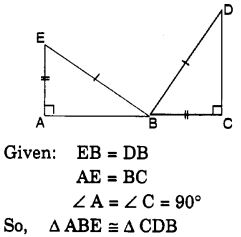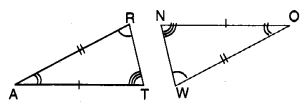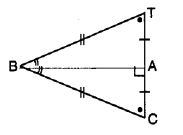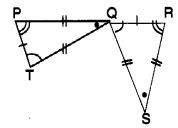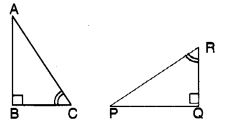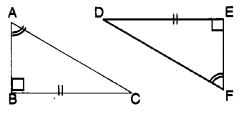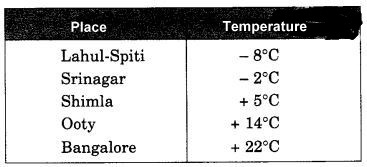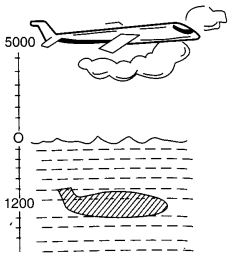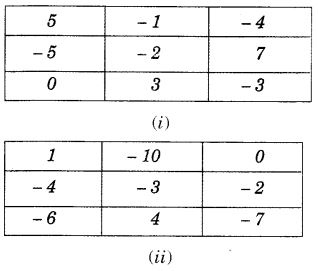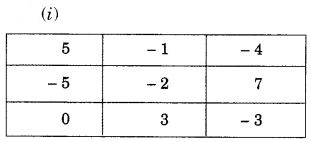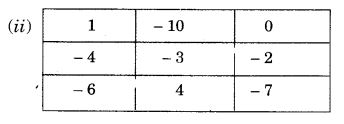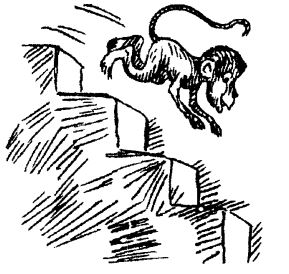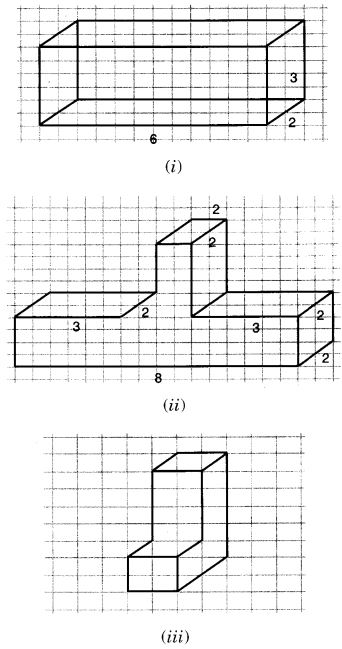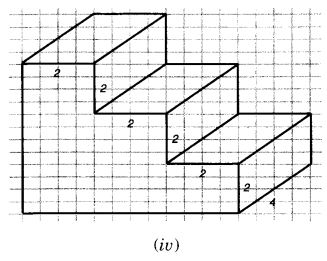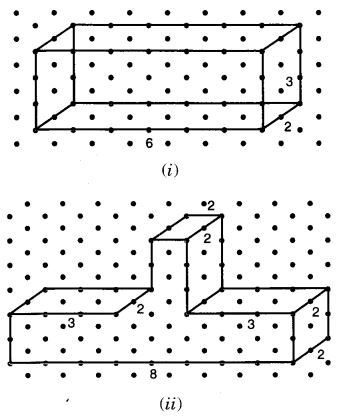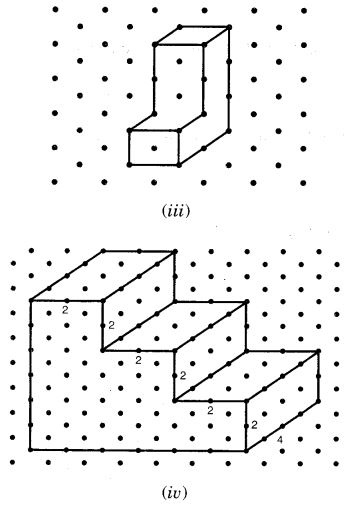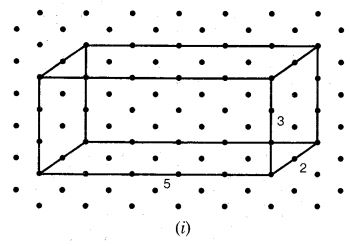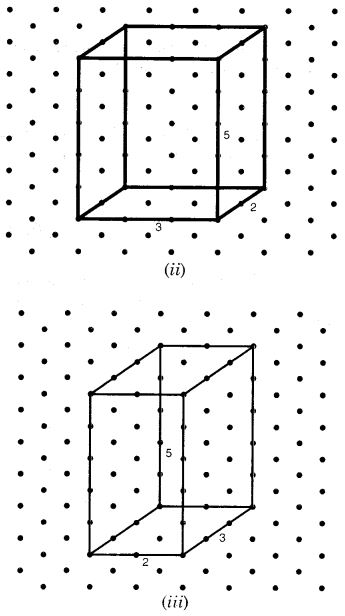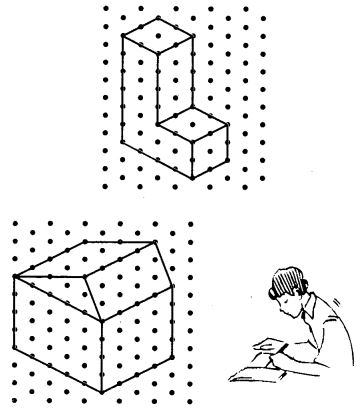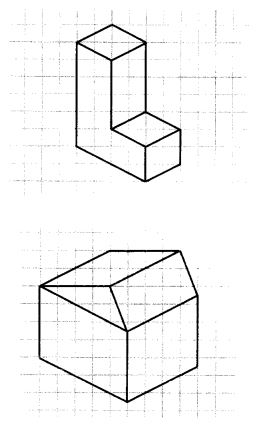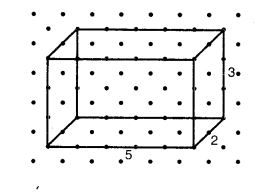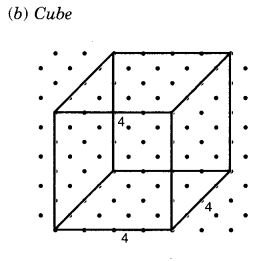Check the below NCERT MCQ Questions for Class 7 Maths Chapter 4 Simple Equations with Answers Pdf free download. MCQ Questions for Class 7 Maths with Answers were prepared based on the latest exam pattern. We have provided Simple Equations Class 7 Maths MCQs Questions with Answers to help students understand the concept very well. https://mcqquestions.guru/mcq-questions-for-class-7-maths-chapter-4/
Students can also refer to NCERT Solutions for Class 7 Maths Chapter 1 Simple Equations for better exam preparation and score more marks.
Simple Equations Class 7 MCQs Questions with Answers
Simple Equations Class 7 MCQ Question 1.
Write the following statement in the form of an equation:
The sum of three times x and 10 is 13.
(a) 3x + 10 = 13
(b) 3x – 10 = 13
(c) 3x + 13 = 10
(d) none of these
Answer
Answer: (a) 3x + 10 = 13
Class 7 Maths Chapter 4 MCQ Question 2.
Write the following statement in the form of an equation:
If you subtract 3 from 6 times a number, you get 9
(a) 3x – 6 = 9
(b) 6x – 3 = 9
(c) 6x + 3 = 9
(d) 3x + 6 = 9
Answer
Answer: (b) 6x – 3 = 9
MCQ Questions For Class 7 Maths Chapter 4 Question 3.
Write the following statement in the form of an equation:
One fourth of n is 3 more than 2
(a) \(\frac { n }{ 4 } \) – 2 = 3
(b) \(\frac { n }{ 4 } \) + 2 = 3
(c) \(\frac { n }{ 2 } \) – 4 = 3
(d) \(\frac { n }{ 2 } \) + 4 = 3
Answer
Answer: (a) \(\frac { n }{ 4 } \) – 2 = 3
MCQ On Simple Equations For Class 7 Question 4.
Write the following statement in the form of an equation:
One third of a number plus 2 is 3
(a) \(\frac { m }{ 3 } \) – 2 = 3
(b) \(\frac { m }{ 3 } \) + 2 = 3
(c) \(\frac { m }{ 2 } \) – 3 = 3
(d) \(\frac { m }{ 2 } \) + 3 = 3
Answer
Answer: (b) \(\frac { m }{ 3 } \) + 2 = 3
Class 7 Maths Chapter 4 MCQ With Answers Question 5.
Write the following statement in the form of an equation:
Taking away 5 from x gives 10
(a) x – 5 = 10
(b) x + 5 = 10
(c) x – 10 – 5
(d) none of these
Answer
Answer: (a) x – 5 = 10
Class 7 Maths Ch 4 MCQ Question 6.
Write the following statement in the form of an equation:
Four times a number p is 8.
(a) 4P = 8
(b) P + 4 = 8
(c) p – 4 = 8
(d) p ÷ 4 = 8
Answer
Answer: (a) 4P = 8
Class 7 Math Chapter 4 MCQ Question 7.
Write the following statement in the form of an equation:
Add 1 to three times n to get 7
(a) 3n + 1 = 7
(b) 3n – 1 = 7
(c) 3n + 7 = 1
(d) none of these
Answer
Answer: (a) 3n + 1 = 7
Simple Equations MCQ Class 7 Question 8.
Write the following statement in the form of an equation:
The number b divided by 6 gives 5.
(a) \(\frac { b }{ 6 } \) = 5
(b) b – 5 = 6
(c) 5b = 6
(d) b + 5 = 6
Answer
Answer: (a) \(\frac { b }{ 6 } \) = 5
Class 7 Simple Equations MCQ Question 9.
The solution of the equation x + 3 = 0 is
(a) 3
(b) -3
(c) 0
(d) 1
Answer
Answer: (b) -3
Hint:
x + 3 = 0 ⇒ x = -3.
MCQ Questions On Simple Equations For Class 7 Question 10.
The solution of the equation x – 6 = 1 is
(a) 1
(b) 6
(c) -7
(b) 7
Answer
Answer: (d) 7
Hint:
x – 6 = 1 ⇒ x = 1 + 6 = 7.
Class 7th Maths Chapter 4 MCQ Question 11.
The solution of the equation 5x = 10 is
(a) 1
(b) 2
(c) 5
(d) 10
Answer
Answer: (b) 2
Hint:
5x = 10 ⇒ x = \(\frac{10}{5}\) = 2
MCQ Questions For Class 7 Maths Simple Equations Question 12.
The solution of the equation \(\frac { m }{ 2 } \) = 3 is
(a) 2
(b) 3
(c) 12
(d) 6
Answer
Answer: (d) 6
Hint:
\(\frac{m}{2}\) = 3 ⇒ m = 3 × 2 = 6.
Class 7 Maths Chapter 4 MCQ Online Test Question 13.
The solution of the equation 7n + 5 = 12 is
(a) 0
(b) – 1
(c) 1
(d) 5
Answer
Answer: (c) 1
Hint:
7n + 5 = 12 ⇒ 7n = 12 – 5
⇒ 7n = 1 ⇒ n = \(\frac{7}{7}\) = 1.
Class 7 Chapter 4 Maths MCQ Question 14.
The solution of the equation 4p – 3 = 9 is
(a) 1
(b) 2
(c) 3
(d) 4
Answer
Answer: (c) 3
Hint:
4p – 3 = 9 ⇒ 4p = 9 + 3 = 12
⇒ p = \(\frac{12}{4}\) = 3.
MCQ Class 7 Maths Chapter 4 Question 15.
The solution of the equation 5p + 2 = 7 is
(a) 0
(b) 1
(c) -1
(d) 2
Answer
Answer: (b) 1
Hint:
5p + 2 = 71 ⇒ 5p = 7 – 2 = 5
⇒ p = \(\frac{5}{5}\) = 1.
Question 16.
The solution of the equation 3p – 2 = 4 is
(a) 0
(b) 1
(c) 2
(d) 3
Answer
Answer: (c) 2
Hint:
3p – 2 = 4 ⇒ 3p = 4 + 2 = 6
⇒ P = \(\frac{6}{3}\) = 2
Question 17.
The solution of the equation p + 4 = 4 is
(a) 0
(b) 4
(c) -4
(d) 8
Answer
Answer: (a) 0
Hint:
p + 4 = 4 ⇒ P = 4 – 4 = 0.
Question 18.
The solution of the equation m – 1 = 2 is
(a) 1
(b) 2
(c) 3
(d) 6
Answer
Answer: (c) 3
Hint:
m – 1 = 2 ⇒ m = 2 + 1 = 3.
Question 19.
The solution of the equation 2m = 4 is
(a) 1
(b) 2
(c) -1
(d) -2
Answer
Answer: (b) 2
Hint:
2m = 4 ⇒ m = \(\frac{4}{2}\) = 2
Question 20.
The solution of the equation \(\frac { m }{ 3 } \) = 3 is
(a) 3
(b) 6
(c) 9
(d) 12
Answer
Answer: (c) 9
Hint:
\(\frac{m}{3}\) = 3 ⇒ m = 3 × 3 = 9.
Question 21.
The solution of the equation = 6 is
(a) 6
(b) 7
(c) 14
(d) 3
Answer
Answer: (c) 14
Hint:
\(\frac{3m}{7}\) = 6 ⇒ 3m = 7 × 6 = 42
⇒ m = \(\frac{42}{3}\) = 14
Question 22.
The solution of the equation 3p + 5 = 8 is
(a) -1
(b) 1
(c) 3
(d) 5
Answer
Answer: (b) 1
Hint:
3p + 5 = 8 ⇒ 3p = 8 – 5 = 3
⇒ P = \(\frac{3}{3}\) = 1 4p – 2 = 10
Question 23.
The solution of the equation 4p – 2 = 10 is
(a) 1
(b) 2
(c) 3
(d) 4
Answer
Answer: (c) 3
Hint:
4p – 2 = 10 ⇒ 4p = 10 + 2 = 12
⇒ p = \(\frac{12}{4}\) = 3.
Question 24.
The solution of the equation \(\frac { p }{ 2 } \) + 1 = 3 is
(a) 1
(b) 2
(c) 3
(d) 4
Answer
Answer: (d) 4
Hint:
\(\frac{p}{2}\) + 1 = 3 ⇒ \(\frac{p}{2}\) = 3 – 1 = 2
p = 2 × 2 = 4
Question 25.
The solution of the equation 3 m + 7=16 is
(a) 1
(b) 2
(c) 3
(d) 4
Answer
Answer: (c) 3
Hint:
3m + 7 = 16 ⇒ 3m = 16 – 7 = 9
⇒ m = \(\frac{9}{3}\) = 3
Question 26.
The solution of the equation 2p – 1 = 3 is
(a) 1
(b) 2
(c) 3
(d) 4
Answer
Answer: (b) 2
Hint:
2p – 1 = 3 ⇒ 2p = 3 + 1 = 4
⇒ p = \(\frac{4}{2}\) = 2.
Question 27.
The solution of the equation 4x + 5 = 9 is
(a) 1
(b) 2
(c) 3
(d) 4
Answer
Answer: (a) 1
Hint:
4x + 5 = 9 ⇒ 4x = 9 – 6 = 4
⇒ x = \(\frac{4}{4}\) = 1.
Question 28.
The solution of the equation 10 y – 20 = 30 is
(a) 1
(b) 2
(c) 3
(d) 5
Answer
Answer: (d) 5
Hint:
10y – 20 = 30 ⇒ 10y = 30 + 20 = 50
⇒ y = \(\frac{50}{10}\) = 5.
Question 29.
The solution of the equation y – 4 = – 1 is
(a) 1
(b) 2
(c) 3
(d) 4
Answer
Answer: (c) 3
Hint:
y – 4 = -1 ⇒ y = 4 – 1 = 3.
Question 30.
The solution of the equation y + 2 = -2 is
(a) 2
(b) -2
(c) 4
(d) -4
Answer
Answer: (d) -4
Hint:
y + 2 = -2 ⇒ y = -2 – 2 = -4.
Question 31.
The solution of the equation 10t = -20 is
(a) 1
(b) -1
(c) 2
(d) -2
Answer
Answer: (d) -2
Hint:
10t = -20 ⇒ t = –\(\frac{20}{10}\) = -2
Question 32.
The solution of the equation \(\frac { z }{ 2 } \) = \(\frac { 3 }{ 4 } \) is
(a) \(\frac { 1 }{ 2 } \)
(b) \(\frac { 3 }{ 2 } \)
(c) \(\frac { 1 }{ 4 } \)
(d) \(\frac { 3 }{ 4 } \)
Answer
Answer: (b) \(\frac { 3 }{ 2 } \)
Hint:
\(\frac{z}{2}\) = \(\frac{3}{4}\) ⇒ z = \(\frac{3×2}{4}\) = \(\frac{3}{2}\)
Question 33.
The solution of the equation 2s = 0 is
(a) 2
(b) -2
(c) 0
(d) \(\frac { 1 }{ 2 } \)
Answer
Answer: (c) 0
Hint:
2s = 0 ⇒ s = \(\frac{0}{2}\) = 0.
Question 34.
The solution of the equation – \(\frac { p }{ 7 } \) = 3 is
(a) -3
(b) -7
(c) -21
(d) 21
Answer
Answer: (c) -21
Hint:
–\(\frac{p}{7}\) = 3 ⇒ -p = 3 × 7 = 21
⇒ p = -21
Question 35.
The solution of the equation 3s + 6 = 0 is
(a) 1
(b) -1
(c) 2
(d) -2
Answer
Answer: (d) -2
Hint:
3s + 6 = 0
⇒ 3s = -6 ⇒ s = –\(\frac{6}{3}\) = -2.
Question 36.
The solution of the equation 10p = 10 is
(a) 1
(b) – 1
(c) 10
(d) – 10
Answer
Answer: (a) 1
Hint:
10p = 10 ⇒ p = \(\frac{10}{10}\) = 1.
Question 37.
The solution of the equation 10p + 10 = 110 is
(a) 10
(b) -10
(c) 100
(d) 110
Answer
Answer: (a) 10
Hint:
10p + 10 = 110
⇒ 10p = 110 – 10 = 100
⇒ p = \(\frac{100}{10}\) = 10.
Question 38.
The solution of the equation 12p – 11 = 13 is
(a) 1
(b) 2
(c) 3
(d) 4
Answer
Answer: (b) 2
Hint:
12p – 11 = 13 ⇒ 12p = 13 + 11 = 24
⇒ p = \(\frac{24}{12}\) = 2.
Question 39.
The solution of the equation 2 (m + 3) = 8 is
(a) 1
(b) 2
(c) 3
(d) 4
Answer
Answer: (a) 1
Hint:
2(m + 3) = 8 ⇒ m + 3 = \(\frac{8}{2}\) = 4
⇒ m = 4 – 3 = 1.
Question 40.
The solution of the equation – 2(x + 3) = 4 is
(a) -2
(b) -3
(c) -4
(d) -5
Answer
Answer: (d) -5
Hint:
-2 (x + 3) = 4 ⇒ x + 3 = \(\frac{4}{-2}\) = -2
⇒ x = -2 – 3 = -5.
Question 41.
The solution of the equation \(\frac { 5 }{ 2 } \) x = 15 is
(a) 2
(b) 4
(c) 6
(d) 10
Answer
Answer: (c) 6
Hint:
\(\frac{5}{2}\) x = 15 ⇒ x = \(\frac{15×2}{5}\) = 6
Question 42.
The solution of the equation 4(2 – x) = 4 is
(a) 1
(b) 2
(c) 3
(d) 4
Answer
Answer: (a) 1
Hint:
4 (2 – x) = 4 ⇒ 2 – x = \(\frac{4}{4}\) = 1
⇒ x = 2 – 1 = 1.
Question 43.
The solution of the equation -4(2 + x) = 4 is
(a) -1
(b) -2
(c) -3
(d) -4
Answer
Answer: (c) -3
Hint:
-4(2 + x) = 4 ⇒ 2 + x = \(\frac{4}{-4}\) = -1
⇒ x = -1 – 2 = -3.
Question 44.
The solution of the equation – 4 = 2 (p – 2) is
(a) 0
(b) 1
(c) 2
(d) 4
Answer
Answer: (a) 0
Hint:
-4 = 2(p – 2) ⇒ p – 2 = –\(\frac{4}{2}\) = -2
⇒ p = -2 + 2 = 0.
Question 45.
The solution of the equation 0 = 4 + 4(m + 1) is
(a) 1
(b) -1
(c) 2
(d) -2
Answer
Answer: (d) -2
Hint:
0 = 4 + 4 (m + 1)
⇒ 4(m + 1) = -4 ⇒ m + 1 = –\(\frac{4}{4}\) = -1
m = -1 – 1 = -2.
We hope the given NCERT MCQ Questions for Class 7 Maths Chapter 4 Simple Equations with Answers Pdf free download will help you. If you have any queries regarding Simple Equations CBSE Class 7 Maths MCQs Multiple Choice Questions with Answers, drop a comment below and we will get back to you soon.

